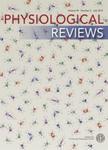版权所有:内蒙古大学图书馆 技术提供:维普资讯• 智图
内蒙古自治区呼和浩特市赛罕区大学西街235号 邮编: 010021

作者机构:Australian Natl Univ Res Sch Biol Acton ACT 0200 Australia
出 版 物:《PHYSIOLOGICAL REVIEWS》 (生理学评论)
年 卷 期:2013年第93卷第2期
页 面:767-802页
核心收录:
学科分类:0710[理学-生物学] 07[理学] 071003[理学-生理学]
基 金:National Health and Medical Research Council MAWA Trust
主 题:Ion Channels Biological Toxins Technological forecasting Researchers computational methods Computational modeling
摘 要:Gordon D, Chen R, Chung S-H. Computational Methods of Studying the Binding of Toxins From Venomous Animals to Biological Ion Channels: Theory and Applications. Physiol Rev 93: 767-802, 2013;doi:10.1152/physrev.00035.2012.-The discovery of new drugs that selectively block or modulate ion channels has great potential to provide new treatments for a host of conditions. One promising avenue revolves around modifying or mimicking certain naturally occurring ion channel modulator toxins. This strategy appears to offer the prospect of designing drugs that are both potent and specific. The use of computational modeling is crucial to this endeavor, as it has the potential to provide lower cost alternatives for exploring the effects of new compounds on ion channels. In addition, computational modeling can provide structural information and theoretical understanding that is not easily derivable from experimental results. In this review, we look at the theory and computational methods that are applicable to the study of ion channel modulators. The first section provides an introduction to various theoretical concepts, including force-fields and the statistical mechanics of binding. We then look at various computational techniques available to the researcher, including molecular dynamics, Brownian dynamics, and molecular docking systems. The latter section of the review explores applications of these techniques, concentrating on pore blocker and gating modifier toxins of potassium and sodium channels. After first discussing the structural features of these channels, and their modes of block, we provide an in-depth review of past computational work that has been carried out. Finally, we discuss prospects for future developments in the field.